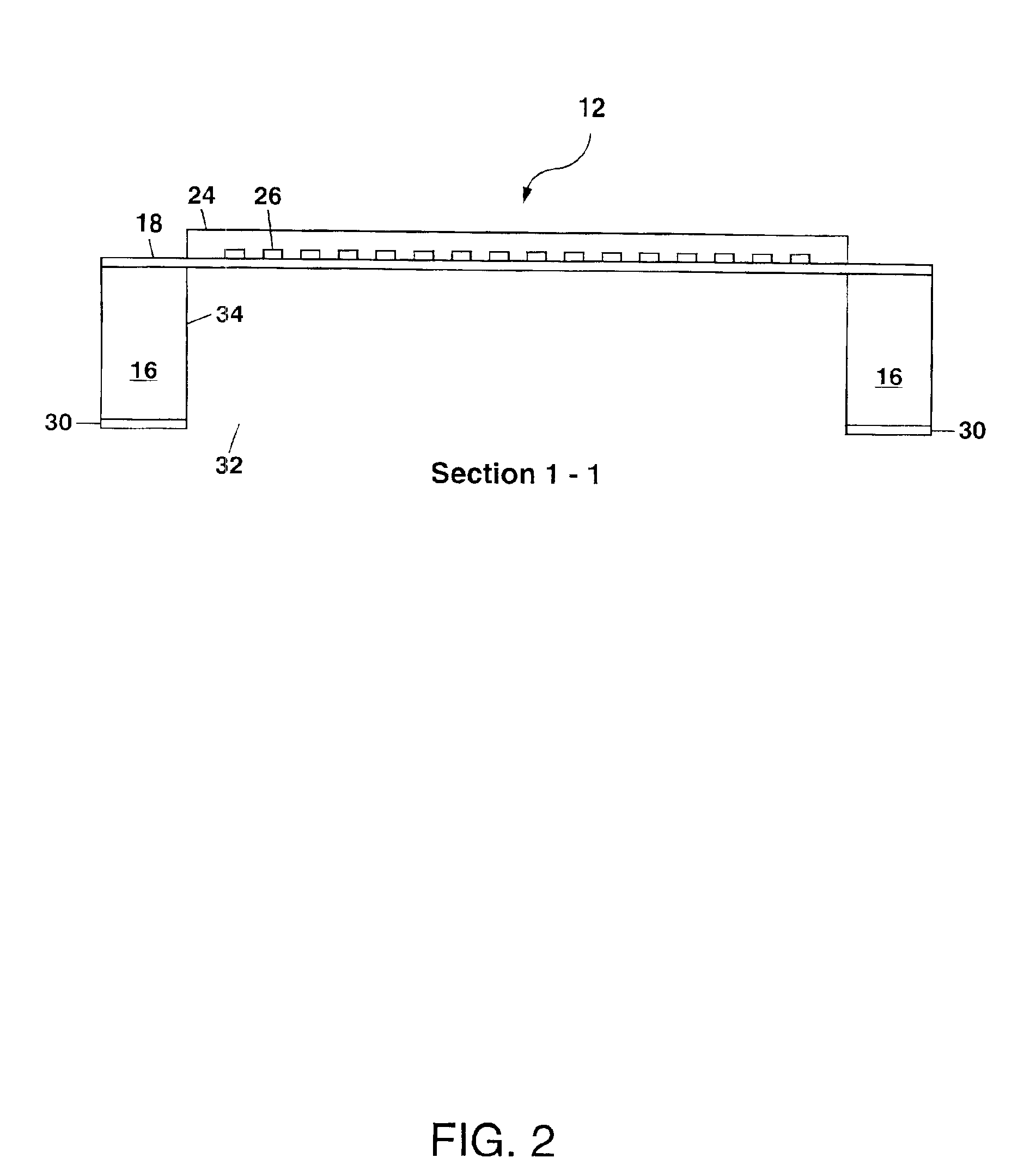Apparatus for sensing volatile organic chemicals in fluids
a technology of volatile organic chemicals and apparatus, applied in calibration apparatus, instruments, specific gravity measurement, etc., can solve the problems of time-consuming and relatively expensive process, and achieve the effect of simplifying background correction for the response of the chemiresistor, improving sensitivity and selectivity for sensing vocs
- Summary
- Abstract
- Description
- Claims
- Application Information
AI Technical Summary
Benefits of technology
Problems solved by technology
Method used
Image
Examples
first embodiment
[0024]Referring to FIG. 1, there is shown the chemical-sensing apparatus 10 of the present invention. In FIG. 1, the apparatus 10 comprises a chemical preconcentrator 12 and a plurality of chemiresistors 14. The term “chemiresistor” as used herein refers to a resistor whose electrical resistance changes (e.g. increases) upon exposure to molecules of one or more chemical species. Although the preconcentrator 12 and the chemiresistors 14 are shown in FIG. 1 as being located on different substrates 16 and 16′, in other embodiments of the present invention a common substrate 16 can be used to support both the preconcentrator 12 and one or more chemiresistors 14.
[0025]The substrates 16 and 16′ in FIG. 1 each comprise monocrystalline silicon, with a thickness of generally about 0.5 millimeter. An insulating layer 18 (e.g. silicon nitride, silicon dioxide, silicon oxynitride, silicate glass or silicon carbide) can be formed above an upper surface of each substrate 16 and 16′ to electricall...
second embodiment
[0071]FIG. 4 schematically illustrates in cross-section view the apparatus 10 of the present invention. This embodiment of the present invention provides an increased measurement response time as compared to the embodiment of FIG. 1 since the chemiresistors 14 can be located even closer to the sorptive material 24 (e.g. ≦2 millimeters), with the chemiresistors 14 preferably facing the sorptive material 24. This embodiment of the present invention also permits each of the preconcentrator 12 and one or more chemiresistors 14 to be located on different parts of a separable housing 34 so that the preconcentrator 12 can be separated from the chemiresistors 14 if desired. This can be advantageous, for example, when one or more analytes (e.g. VOCs) are to be measured in a liquid, in the vapor above a liquid (e.g. for groundwater monitoring), or in any environment incompatible with the chemiresistors 14. This can also be advantageous when the remainder of the housing 34 contains additional ...
PUM
| Property | Measurement | Unit |
|---|---|---|
| Percent by volume | aaaaa | aaaaa |
| Time | aaaaa | aaaaa |
| Concentration | aaaaa | aaaaa |
Abstract
Description
Claims
Application Information
 Login to View More
Login to View More - R&D
- Intellectual Property
- Life Sciences
- Materials
- Tech Scout
- Unparalleled Data Quality
- Higher Quality Content
- 60% Fewer Hallucinations
Browse by: Latest US Patents, China's latest patents, Technical Efficacy Thesaurus, Application Domain, Technology Topic, Popular Technical Reports.
© 2025 PatSnap. All rights reserved.Legal|Privacy policy|Modern Slavery Act Transparency Statement|Sitemap|About US| Contact US: help@patsnap.com



